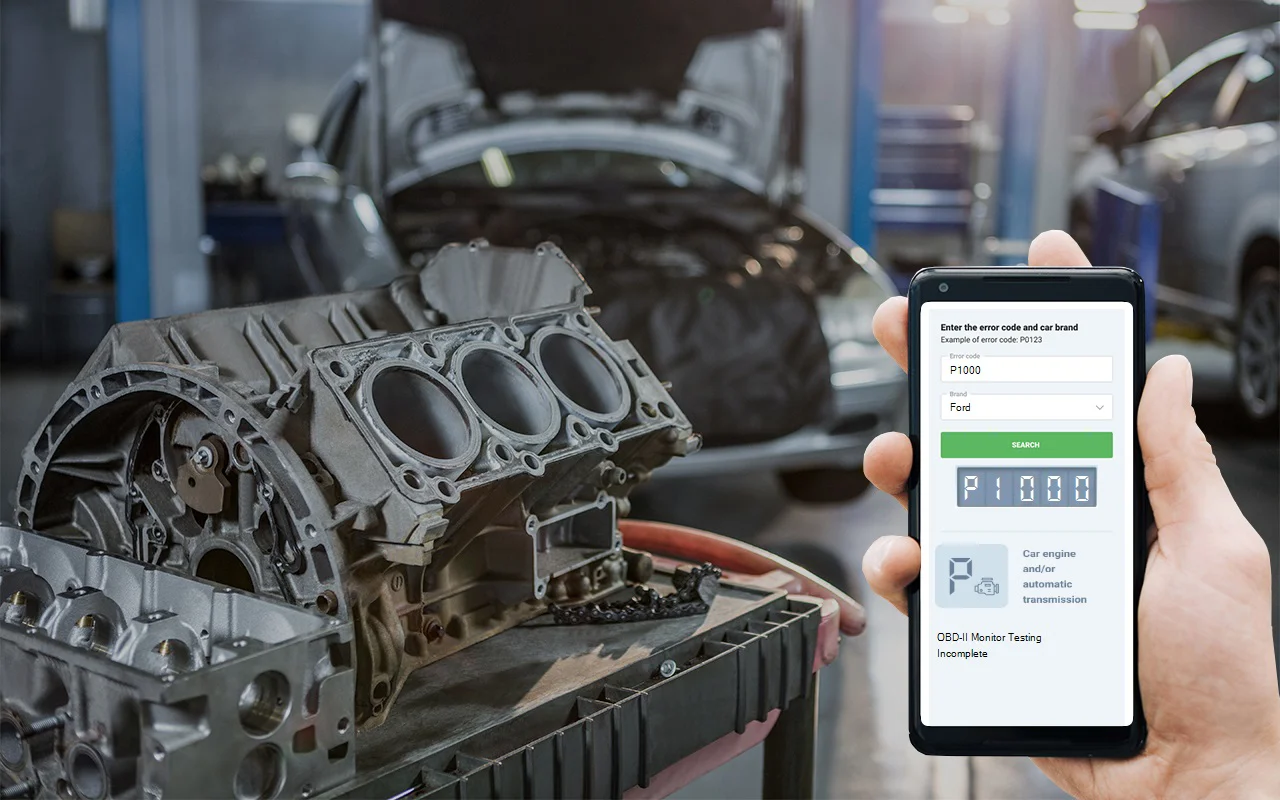Causes of P1000 Ford
The causes of DTC P1000 may vary from one vehicle model to another, as this code depends on the specific manufacturer. Here are some scenarios in which this code may appear on vehicles of different brands:
In some brands, such as Ford, Jaguar, and Mazda, the P1000 code may appear when:
- The battery has been disconnected.
- The powertrain control module (PCM) has been unplugged.
- Diagnostic trouble codes (DTCs) have been cleared without resolving the underlying issues.
- An OBD-II monitor failure occurs before the test cycle is completed.
In other vehicles, this code may be detected when:
- PCM trouble codes have been cleared using an OBD-II scan tool.
- The power take-off (PTO) circuit is shorted to B+ or VPWR.
- The power take-off (PTO) was activated during testing.
- The required drive cycles to clear the P1000 code have not been completed.
- The necessary time for a full OBD-II system reset may not have elapsed yet.
Symptoms of P1000 error in Ford
Although the P1000 fault code is one of the most common in the OBD-II system, it is considered one of the least serious and does not pose a threat to vehicle safety or drivability. Typically, this code is accompanied by only one symptom – the illumination of the Check Engine Light (CEL), also known as the Malfunction Indicator Light (MIL). In rare cases, other fault codes may also be present.

Common Mistakes When Dealing with OBD Code P1000 for Ford
Correctly identifying and understanding the definition of code P1000 in the context of a specific make and model of a vehicle is an important step in resolving the issue. Although the general meaning of this code may be similar across different manufacturers, specific variations and context can differ. Therefore, it is always important to refer to definitions relevant to your specific vehicle make and model to properly diagnose and address the P1000 code issue.

What Repairs Can Fix the P1000 Fault Code?
As mentioned earlier, different methods may be used to resolve the P1000 code in Ford vehicles depending on the manufacturer and model of your car. Typically, this includes completing several drive cycles or using specialized manufacturer software. It is important to follow the maintenance instructions for your specific vehicle and, if necessary, use factory software to check system readiness. Once the checks are completed, the code can be cleared, ensuring that all systems are properly connected.
Conclusion
The DTC P1000 code, when it appears alone without other OBD-II codes, is usually not a serious issue, and its resolution can often be postponed. In such cases, the priority should be to address any other stored fault codes that may accompany it. It is important to note that different vehicle models may have unique approaches to resolving this code, which are typically outlined in their maintenance manuals. Additionally, check the battery and engine control module (PCM) connections to ensure they are properly connected, as this may influence the recurring presence of this code.
Video for "Error p1000" on YouTube
The following error codes are often searched for
Solution for error code p1000 Ford in dtc-errors.com
Error Codes OBD can be useful for diagnostics of difficulties with the automobile. If you encounter with a DTC p1000 in Ford, it is important to comprehend that it provides data about potential malfunctions in the systems of your automobile. The error code p1000 for Ford may indicate difficulties. This error is found in the following models of this manufacturer: Ford.
p1000 Ford diagnosis in a workshop
To establish and resolve with greater precision the source of the DTC in Ford, it is suggested to consult professionals at an automotive workshop. Qualified mechanics have the expertise and tools necessary to perform a detailed diagnosis and the corresponding repair, which will help avoid further damage to your vehicle. Do not ignore code p1000 in Ford, as it warns about a potential issue that could impact the performance and safety of your car. Seeking help promptly will give you the opportunity to maintain your vehicle in good working condition and extend its lifespan.







